Hunting Styles
Hunting Styles: Hunting behaviors of 5 different species of wildlife
Text and photos by Heather Cline
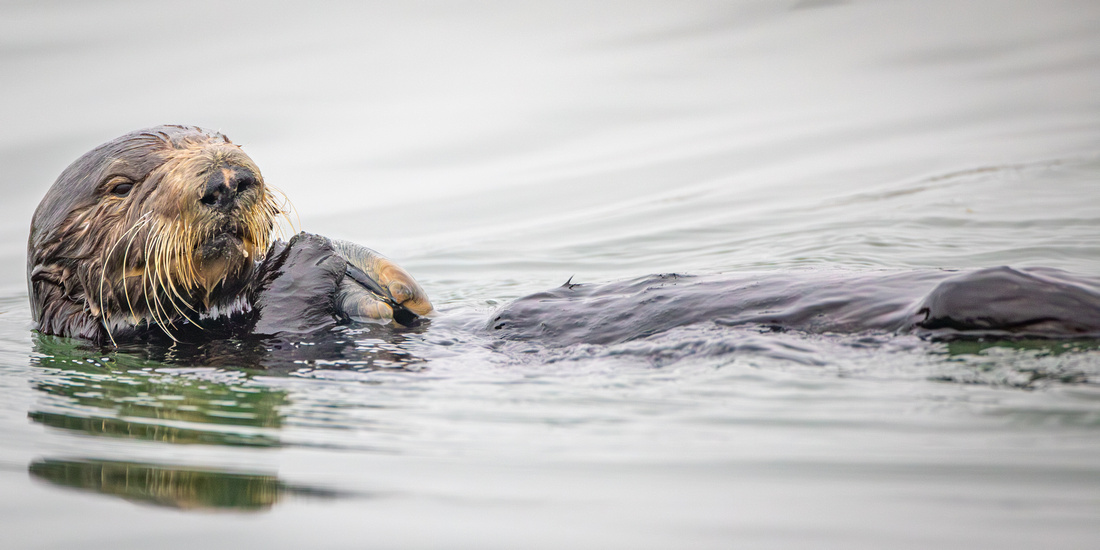 
Sea Otter with clam |
In the wild, survival often depends on extraordinary hunting strategies. The crafty fox uses its keen hearing and stealth to ambush prey, often pouncing with precision. Ospreys, masters of aerial hunting, dive with amazing speed to snatch fish from water with their talons. The solitary bobcat blends into its environment, relying on patience and agility to surprise its prey. American kestrels, small yet fierce, hover in the air before diving to catch unsuspecting insects or small mammals. Meanwhile, the playful sea otter showcases remarkable dexterity, using tools like rocks to crack open shellfish. Together, these species exemplify the diverse and fascinating tactics wildlife employ to thrive in their natural habitats.
This post takes a closer look at the hunting strategies of these 5 predators.
Fox
There are over 20 species of fox worldwide and while their hunting strategies are not identical, they do share general hunting strategies.
Foxes are adaptable eaters, consuming whatever is easy to find or small enough to catch. Their prey includes small mammals, birds, and insects like grasshoppers, crickets, and beetles. During warmer seasons, foxes focus on fruits, berries, and nuts, but winter’s scarcity pushes them to rely on meat.
Foxes have sharp senses—sight, hearing, touch, and smell—that help them hunt effectively. They can swivel their ears to pinpoint sounds, including low-frequency noises made by animals underground. Their binocular vision helps them judge distances. If a fox hears something underground, it can dig down to catch its prey. Red foxes are skilled hunters, often using a 40-degree pounce to catch mice. However, this technique is a bit of a gamble—the fox doesn’t know what it’s caught until after the hunt. If the prey turns out to be something less desirable, like a shrew or mole, the fox may simply discard it.
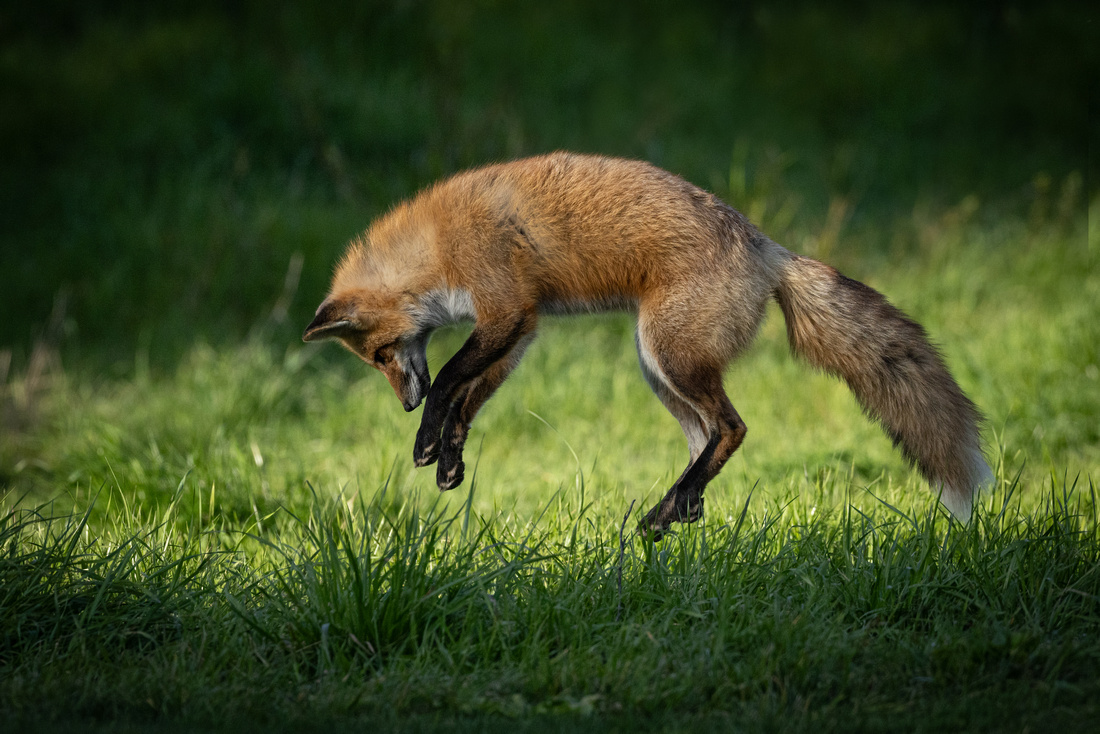 
Red Fox making a pounce for prey |
Osprey
Ospreys primarily eat fish. They are expert fish hunters, spotting prey from the air or while perched by the water. They dive and plunge into the water to grab a single fish, then take off to find a perch to eat. If the hunt fails, they quickly search for another fish.
Ospreys scan the water from 30–130 feet up, alternating wing strokes and gliding. They use excellent eyesight to identify prey quickly. After spotting a target, they may hover briefly or dive immediately, especially if the fish is moving fast. They dive vertically or diagonally, using wingbeats to gain speed. Before hitting the water, they extend their legs forward to grab the fish.
 
Osprey with fish |
Bobcat
Despite their small size, bobcats are highly successful predators found across most of North America. They thrive in diverse environments, from deserts to forests, thanks to their excellent hunting skills. At 2–3 feet long, they don’t rely on strength or speed but instead use ambush tactics to surprise prey. They hunt by stalking their prey and then ambushing with a short chase or pounce. These natural climbers can easily scale surfaces, making them even more effective hunters. Their efficiency ensures they stay well-fed year-round.
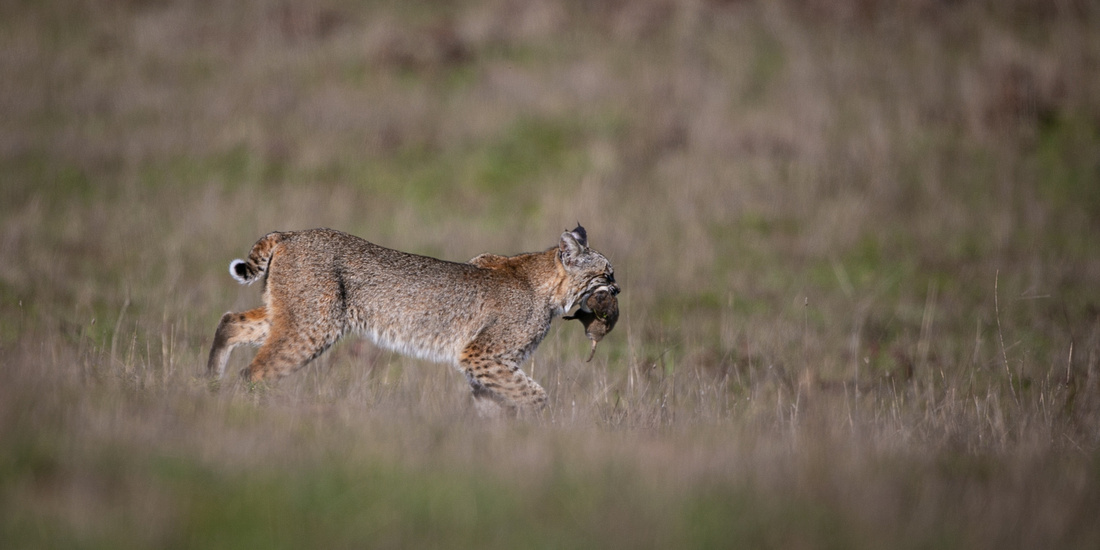 
Bobcat with gopher |
American Kestrel
American kestrels hunt by scanning for prey from high perches like power lines, fence posts, or trees. They swoop down swiftly to catch small animals like insects, rodents, or birds. In open areas with few perches, they use hovering or kiting to hunt. With sharp vision, agility, and speed, kestrels dive quickly to seize prey with their talons. They typically catch prey on the ground but can grab it in the air as well.
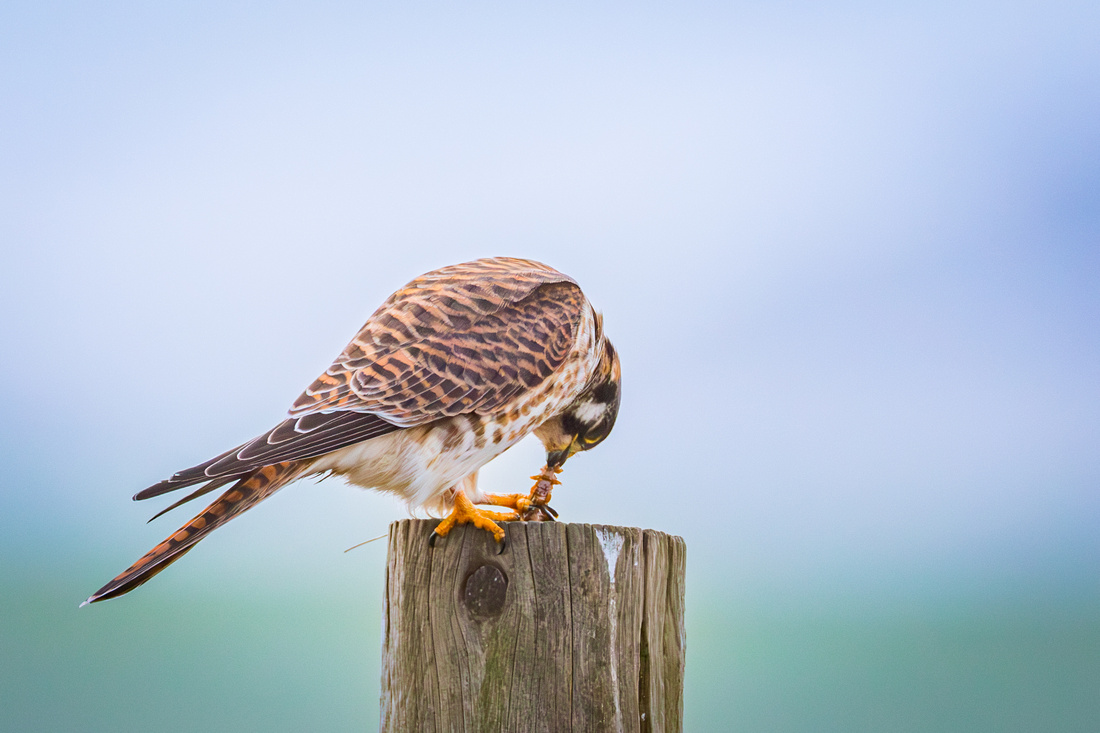 
American Kestrel with Jerusalem Cricket |
Sea Otter
Sea otters are expert underwater hunters, using their sensitive forepaws and whiskers to search crevices and the seafloor for prey such as sea urchins, crabs, clams, mussels, octopus, and fish. They typically forage in shallow coastal waters, usually less than 60 feet deep. Remarkably, sea otters are among the few animals that use tools, often employing rocks to crack open the shells of prey like clams and abalone.
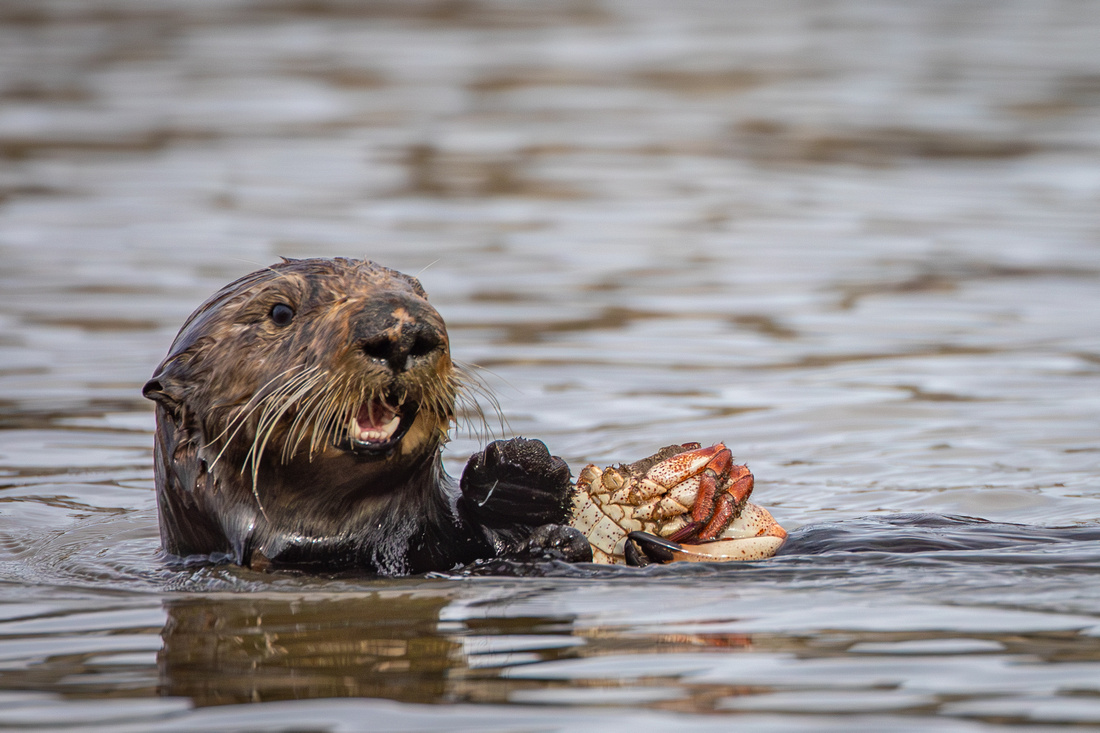 
Sea Otter with crab |
From the air to the water, the forest floor to the sea, these five predators demonstrate the incredible adaptability and ingenuity of wildlife in their hunt for survival. Each species employs unique strategies, perfectly tailored to their environment and prey, offering a glimpse into the remarkable diversity of nature’s hunters. Together, they remind us of the beauty and complexity of the natural world.